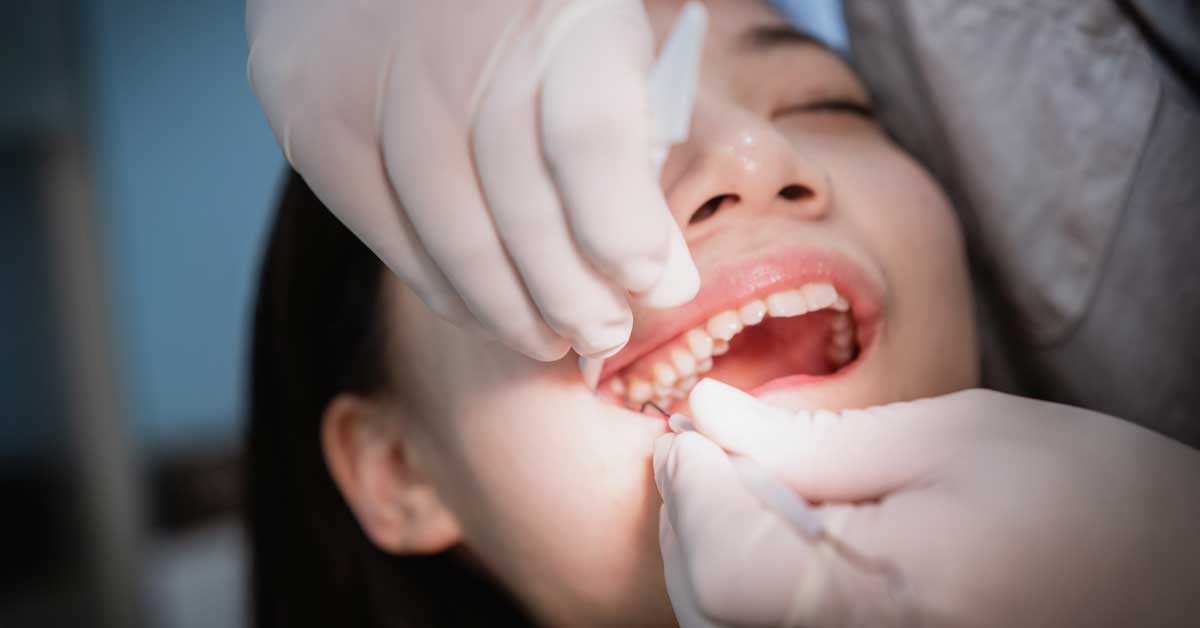Root Canal on Front Tooth: What to Expect
Imagine waking up to a throbbing pain in your front tooth, making every bite excruciating and every smile a struggle.
A root canal treatment is a dental procedure performed to remove infected or inflamed pulp from a front tooth. It is a common and effective way to save a tooth and ensure oral health.
The process involves several steps, including cleaning and disinfection of the tooth’s root canal, filling and sealing the canal, and placing a dental crown for protection and restoration. Pain management techniques are used during and after the procedure to ensure your comfort.
Key Highlights
-
A root canal on a front tooth is a dental procedure that removes infected or inflamed pulp.
-
The process involves cleaning, disinfection, filling, sealing, and placing a dental crown.
-
Pain management techniques ensure your comfort throughout the procedure.
-
After a root canal, you can experience pain relief, preserved natural tooth, improved chewing function, and a restored smile.
-
Root canal treatment is an effective way to save a front tooth and ensure your overall oral health.
Understanding a Root Canal on Front Tooth
Why Root Canals Are Essential for Dental Health
Root canals play a crucial role in maintaining dental health. When a front tooth is infected or damaged, a root canal treatment becomes necessary to save the tooth from extraction. By removing the infected pulp and cleaning the root canal, this procedure eliminates the source of infection and prevents its spread to the surrounding teeth and gums.
The Anatomy of a Front Tooth and the Role of Pulp
A front tooth consists of a crown, which is the visible part, and roots hidden beneath the gums. Inside the roots lies the pulp, which contains blood vessels, nerves, and connective tissue. The pulp plays a vital role in tooth development, providing nourishment and sensory function. During a root canal, the infected or damaged pulp is removed, leaving the tooth functional without compromising its structure or aesthetics.
Assessing the Need for Endodontic Treatment
Various signs and symptoms may indicate the need for endodontic treatment on a front tooth. These include severe pain while chewing, the presence of pimples on the gums, a chipped or cracked tooth, lingering sensitivity to hot or cold, swollen or tender gums, deep decay, and darkening of the gums. If you experience any of these symptoms, it is essential to consult a dentist for an evaluation and determine if a root canal is necessary to restore your dental health.
The Step-by-Step Procedure of Anterior Tooth Root Canal
The step-by-step procedure of a root canal on a front tooth involves the following steps:
-
Examination and X-ray: The dentist examines the tooth and takes an X-ray to assess the condition of the root canal.
-
Anesthesia: Local anesthesia is administered to ensure a painless procedure.
-
Access and Cleaning: A small access hole is created on the surface of the tooth to reach the pulp. The infected or damaged pulp is removed, and the root canal is thoroughly cleaned.
-
Shaping and Disinfection: The root canal is shaped and disinfected using specialized files and irrigation solutions to ensure the removal of all bacteria and debris.
-
Filling and Sealing: The cleaned root canal is filled with a rubber-like material called gutta-percha, and a temporary filling is placed to protect the tooth during the healing process.
-
Restoration: After the root canal has healed, a permanent restoration, such as a dental crown, is placed on the front tooth to restore its functionality and appearance.
Pain Control During and After the Root Canal Therapy
Anesthetic Options and Sedation in Endodontic Care
During a root canal procedure, your dentist will ensure your comfort by offering various anesthetic options. Local anesthesia is commonly used to numb the area around the tooth, preventing pain during the treatment. Topical anesthesia may also be applied to numb the gum tissue.
In some cases, sedation techniques may be used to help patients relax and alleviate anxiety during the procedure. Sedation options may include nitrous oxide (laughing gas) or oral sedatives. Your dentist will discuss the best choice for your specific needs.
Post-Operative Discomfort and Effective Pain Relief Strategies
It is not uncommon to experience some discomfort after a root canal procedure. However, effective pain relief strategies can help minimize any post-operative discomfort. Your dentist may recommend over-the-counter pain medication, such as ibuprofen or acetaminophen, to manage the pain. In some cases, prescription pain medication may be necessary.
Additionally, following your dentist’s post-operative instructions is crucial for a smooth recovery. These instructions may include avoiding certain foods or drinks, maintaining good oral hygiene practices, and taking any prescribed medications as directed.
Managing Expectations: Normal Sensations vs. Complications
It is important to manage your expectations regarding the sensations you may experience during the root canal therapy. Normal sensations after the procedure may include mild discomfort, sensitivity to hot or cold temperatures, or slight swelling of the surrounding tissues. These sensations are temporary and should gradually subside within a few days.
However, it is essential to distinguish between normal sensations and potential complications. If you experience severe pain, worsening swelling, pus discharge, or any other concerning symptoms, it is crucial to contact your dentist immediately. Prompt communication and timely follow-up with your dentist can help address any complications that may arise.
| Anesthetic Options | Sedation Techniques | Pain Relief Strategies | Complications |
|---|---|---|---|
| Local anesthesia | Nitrous oxide (laughing gas) | Over-the-counter pain medication | Severe pain |
| Topical anesthesia | Oral sedatives | Prescribed pain medication | Worsening swelling |
Recovery and Care Following Root Canal Treatment
The Healing Process: What to Expect After the Procedure
After a root canal, it is normal to experience some sensitivity and mild discomfort, which should subside within a few days to a week. It is essential to take care of your oral health during the healing process to ensure a successful recovery. Here are some things to expect and tips for a smooth healing process:
-
Expect some sensitivity and mild discomfort: It is common to experience sensitivity to hot and cold temperatures, as well as some discomfort around the treated tooth. This is temporary and should improve steadily over time.
-
Practice good oral hygiene: Brush your teeth gently twice a day using a soft-bristle toothbrush. Be careful not to put too much pressure on the treated tooth. Floss daily to remove any plaque or food particles between the teeth. Rinse with an antiseptic mouthwash to reduce the risk of infection.
-
Avoid hard or sticky foods: For the first few days after the root canal, stick to soft foods that are gentle on the treated tooth. Avoid chewing on hard objects, such as ice or hard candies, as they can cause damage or dislodgement of the temporary filling or dental crown.
-
Take pain medication as directed: If you experience discomfort, over-the-counter pain medications like ibuprofen or acetaminophen can help alleviate the pain. Follow the instructions provided by your dentist or pharmacist.
-
Attend follow-up appointments: It is crucial to attend any follow-up appointments scheduled by your dentist. These visits allow your dentist to monitor your progress, remove any temporary fillings, and assess the need for a permanent dental crown.
Dental Crown Placement: Achieving Durability and Aesthetics
In many cases, a dental crown is placed on the front tooth after a root canal to restore its durability, shape, and aesthetics. Dental crowns are custom-made caps that cover the entire visible portion of the tooth above the gumline. The crown provides both functional and cosmetic benefits. Here’s what you need to know about dental crown placement:
-
Consultation and impression: Your dentist will examine your tooth and take an impression to create a custom-made dental crown that matches the shape and color of your surrounding teeth.
-
Temporary crown placement: While your permanent dental crown is being fabricated, a temporary crown will be placed to protect the treated tooth and to maintain proper aesthetics.
-
Fitting the permanent crown: Once the permanent crown is ready, your dentist will remove the temporary crown and place the permanent crown using dental cement or adhesive. They will ensure that the fit, shape, and color match your natural teeth seamlessly.
-
Care and maintenance: Proper oral hygiene, including regular brushing, flossing, and routine dental visits, is essential for the long-term success and aesthetics of your dental crown. Avoid biting or chewing on hard objects to prevent damage to the crown.
Long-Term Care: How to Ensure the Success of Your Treatment
Ensuring the long-term success of your root canal treatment involves taking care of your oral health and following the guidance provided by your dentist. Here are some essential tips for long-term care:
-
Maintain good oral hygiene: Brush your teeth at least twice a day using fluoride toothpaste and a soft-bristle toothbrush. Floss daily to remove plaque and food particles from between your teeth. Rinse with an antiseptic mouthwash to reduce the risk of infection.
-
Schedule regular dental check-ups: Visit your dentist for routine check-ups and cleanings. These visits allow your dentist to monitor the health of your teeth and identify any potential issues early on.
-
Follow specific instructions from your dentist: Your dentist may provide you with specific instructions for your root canal treatment and dental crown care. Follow these instructions diligently to ensure the optimal outcome.
-
Avoid bad oral habits: Avoid chewing on hard objects, such as pens or ice cubes, as they can damage or dislodge the dental crown. If you play sports, wear a mouthguard to protect your teeth from trauma.
| Root Canal Recovery Tips | Dental Crown Placement | Long-Term Care |
|---|---|---|
| Expect sensitivity and mild discomfort | Custom-made dental crown matching natural teeth | Maintain good oral hygiene |
| Practice good oral hygiene | Preparation and fitting of the permanent crown | Schedule regular dental check-ups |
| Avoid hard or sticky foods | Temporary crown placement for protection | Follow specific instructions from your dentist |
| Take pain medication as directed | Proper care and maintenance for longevity | Avoid bad oral habits |
| Attend follow-up appointments |
Conclusion
Undergoing a root canal treatment on a front tooth is of utmost importance for long-term tooth preservation. This vital dental procedure offers a solution to save an infected or damaged tooth from extraction, eliminating the need for more invasive alternatives. By familiarizing yourself with the process, pain management techniques, and expected results, you can make informed decisions about your oral health and well-being.
It’s essential to note that a root canal-treated front tooth requires proper care and maintenance to ensure its longevity. By following good oral hygiene practices and scheduling regular dental check-ups, you can significantly extend the lifespan of the treated tooth. Additionally, adhering to any specific instructions from your dentist and adopting healthy habits, such as avoiding chewing on hard objects and wearing a mouthguard during sports, can further protect the treated tooth from damage.
By choosing a root canal treatment and embracing the necessary aftercare, you contribute to the preservation of your natural tooth. This not only restores functionality and aesthetics but also maintains the overall balance and health of your oral cavity. Remember, your smile is worth preserving, and a root canal on a front tooth can help achieve just that.
Frequently Asked Questions
Signs you might need a root canal on a front tooth include severe pain when chewing, sensitivity to hot or cold, swollen or tender gums, discoloration of the tooth, and visible cracks or chips. If you experience any of these symptoms, consult a dentist promptly for evaluation.
Yes, a root canal on a front tooth can effectively restore normal chewing function and aesthetic appearance. The procedure involves removing infected pulp, cleaning the canal, and sealing it, often followed by a crown placement. This not only alleviates pain but also preserves the tooth’s natural look and strength, allowing for confident eating and smiling.
While root canal therapy is generally safe, some risks include persistent infection, tooth fracture, or issues with the crown. Complications are rare but can occur, especially if the infection was severe or the tooth structure is compromised. Immediate communication with your dentist is essential for managing any potential problems, ensuring a successful outcome.
A dental crown is often necessary after a root canal on a front tooth to restore its strength, shape, and appearance. The crown, a custom-made cap, is placed over the tooth once it’s cleaned and sealed. This step is crucial for protecting the tooth from future damage and ensuring it blends seamlessly with your natural teeth, providing both functional and aesthetic benefits.
Root canal treatment is designed to be painless, thanks to local anesthesia that numbs the tooth and surrounding area. While you may feel pressure during the procedure, pain should not be a concern. Post-treatment, some discomfort or mild pain is normal but can be managed with over-the-counter pain relievers. Advances in dental technology and techniques have made root canals much more comfortable than they used to be.
Root Canal In Miami, FL
Don’t delay in restoring your dental health and comfort. Schedule a consultation with our endodontic specialists today and learn how a Root Canal treatment can relieve your pain and save your tooth. Experience the relief and renewed confidence that comes from taking care of your smile.



